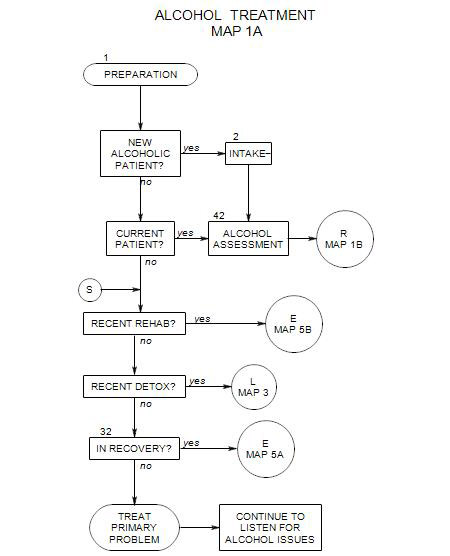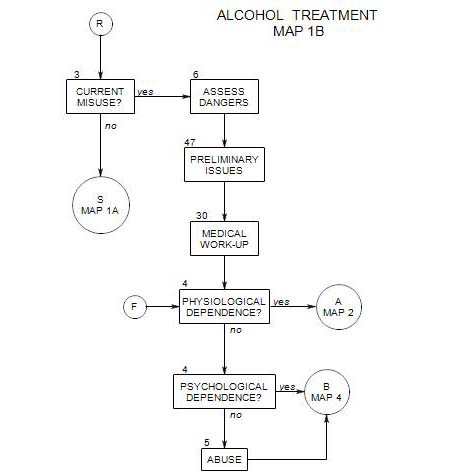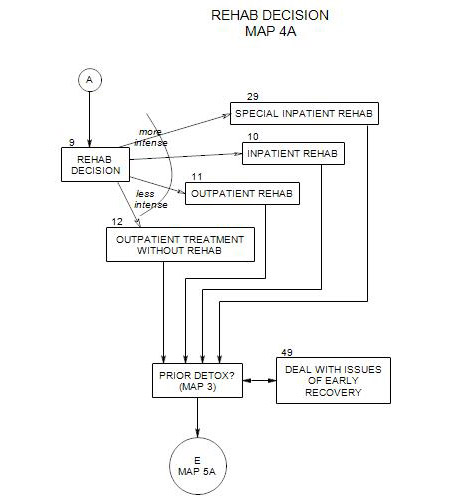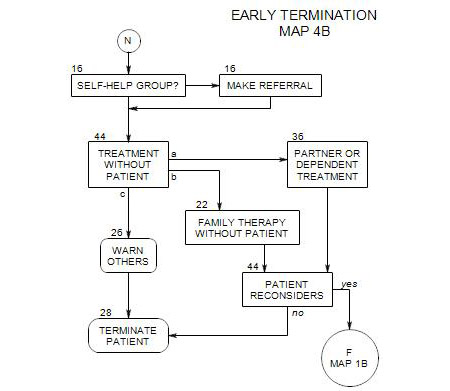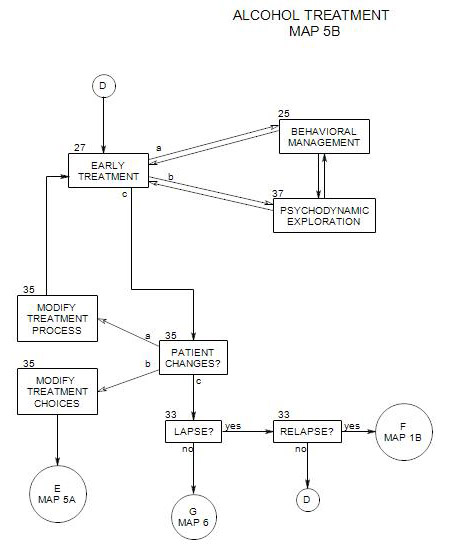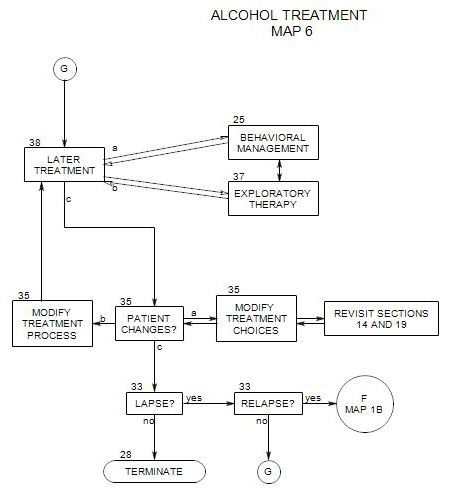17. COUPLE THERAPY
- This section follows Section 14 for some patients.
There are a number of ways that couple therapy can be used, depending on the needs and availability of the patient and his/her partner. When the focus is on an identified patient, the primary goal is to manage, reduce and end that person’s alcohol misuse. There may be many other goals as well, but they are secondary, at least in the beginning of the work.
Although techniques may differ between couple and family therapy, they are similar enough that they are often discussed together. It may be helpful to review major approaches to family therapy [ Section 22 ] when working with a couple.
In many couples, both partners are alcoholic. They may drink together or have different drinking patterns. Here, the primary initial goal must be to manage, reduce and end the alcohol misuse by both partners. Otherwise, there is a strong likelihood that one of them [it could be either one] will undermine the treatment of both. One possibility is to use the couple work to bolster the resolve of both to stop drinking, either together or simultaneously.
If the patient’s partner is not alcoholic, then couple therapy can –
- help the partners continue to work together on couple issues, some of which may contribute to the patient’s drinking if unresolved.
- lead to individual therapy with the other if the identified patient withdraws.
- be a way for the partner and the therapist to work together to support sobriety in the identified patient.
- bolster the resolve of the partner to continue in a relationship with the identified patient.
- help the identified patient stay in treatment.
Approaches to couple therapy can include –
- working on the identified patient’s issues within the context of the couple. Here the contract, at least early on, might be for the partner and therapist to work together in support of the sobriety of the identified patient.
- focusing on the couple more than either individual. This might be important if both partners are drinking or recently sober. They both may have similar issues, and they could collaborate on finding solutions. It could also be helpful if, problems in communication lead to defensive reactions in one or the other partner, and those reactions serve as triggers for the alcoholic.
- serving as a launching point to work on each partner separately. This could be especially useful if one or both initially is/are reluctant to try individual therapy, and individual issues are major sources both of couple problems and of the drinking of the identified patient. It may be less threatening for some people to come with a partner, at least temporarily.
Couple therapy can be either a primary or adjunctive form of treatment. For advantages and uses of couple therapy, see Section 14. For other discussions of couple therapy for alcohol treatment, see Jarvis, etal, 171-178 and 169-191, O’Farrell and Fals-Stewart, Kelvin, 279-281, and McKay [1996].
17a. As the Primary Form of Treatment
In this case, –
- the couple and therapist meet regularly.
- the couple becomes the patient. The symptoms of the original patient are treated as derivative or secondary.
- the focus is on aspects of the relationship that lead to dysfunction, with goals of increased awareness of each other and mutual support.
- both partners focus on their symptom pool and work together to reduce it.
- other forms of therapy are brought in as needed, including individual psychotherapy with either or both partners.
- if a major focus is the patient’s drinking as a symptom of couple dysfunction, then the identified patient may need a 12-step program, and the partner may need Al-Anon or another self-help group as well.
The primary focus in early treatment is managing drinking behavior. Other common couple issues include –
- reviewing the drinking of the identified patient as a primary source of couple issues.
- considering the identified patient’s drinking as a symptom of other unresolved couple issues.
- miscommunication and misunderstandings.
- having different backgrounds and expectations.
- anger, criticism, resentment, or bitterness, especially in the partner, and guilt and defensiveness in the identified patient.
- difficulties in dealing with conflicts and resolving them.
- finding ways to increase positive interactions between them and with other family members.
- being more supportive of each other.
- staying alert to possible relapse risks in the identified patient.
- handling the consequences of the identified patient’s drinking: unpaid bills, legal fees, consequences of social misbehavior, and so on.
- expectations of immediate change, which can lead to disappointment when it doesn’t happen.
- other issues that were masked by a focus on the drinking of the identified patient.
While any of these can be addressed profitably, it generally pays most to begin with work on alcohol misuse; because if not addressed soon enough, it can easily disrupt work on any of the others.
17b. As an Adjunctive Form of Treatment
In this case, individual therapy with the identified patient is typically primary and couple therapy is brought in as needed. It can serve many adjunctive functions:
- The partner can provide information about the identified patient and the effectiveness of the primary treatment modality. This can be used to modify treatment to be more effective.
- The therapist can examine the impact of the identified patient’s symptoms on the couple and the patient’s partner, and work toward reducing that impact.
- The partner’s reaction to the identified patient may be a source of issues that need to be addressed, either in couples work or in the individual work of either partner.
- You can focus more on the identified patient’s communication, especially with the partner and in the context of the couple sessions.
17c. The Therapist
A major issue is whether the same therapist should be used both for the identified patient in individual treatment and for the couple. This is affected by the participants’ attitudes toward the identified patient’s psychological issues and drinking problem.
Advantages of using the same therapist include:
- The therapist is already aware of the issues of the identified patient, which may be an aid to understanding the couple’s dynamics.
- The same therapist can see each partner separately. From that can come a fuller picture of how they deal with each other, what each one isn’t saying, issues each one can’t raise in the presence of the other, and so on.
Disadvantages of using the same therapist include
- It may appear to support the partner’s notion that the whole problem resides in the identified patient, and make it more difficult to explore other issues. It may be difficult to focus on the partner as a source of issues in the relationship or as a contributor to the problems facing the identified patient.
- The therapist may be perceived as biased by either partner because of a special relationship with the other. This is a special risk when the couple therapist is working with one of the partners, possibly exacerbated by issues of secrecy in alcoholic families.
- The identified patient may feel betrayed when the therapist supports ideas or positions of the partner.
If any of these issues arise and can be identified and treated, the work can be beneficial to both partners in the relationship.
